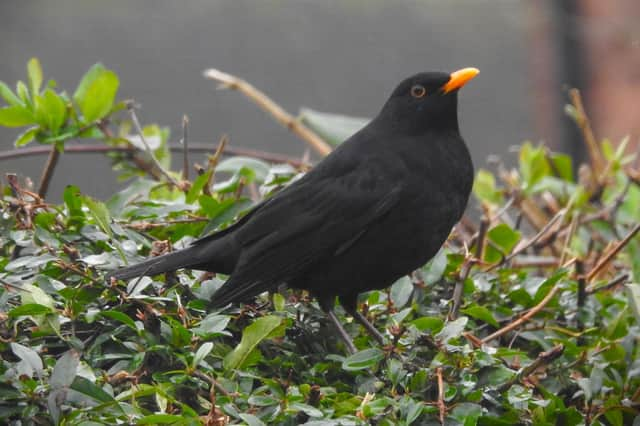On the Wildside: Plenty of surprises in the wildlife garden


So, a couple of weeks ago I put on the outside light in the back garden as I went out to place suet pellets for the regular badger. As I walked across the patio, a great spotted woodpecker flew out of the hedge and across in front of me. Highlighted by the spotlight there was no mistaking it, a roosting woodpecker! And then, just the other day as I was working late on some tidying jobs, darkness was just falling, and a large, female sparrowhawk flew in, almost landing on my head but touching down briefly on the wooden pergola just next to me. I suspect it is roosting there in amongst the passionflower and other climbers but took a dim view of my unexpected presence. So, as I say, nature is full of surprises.
Another change this week has been the apparent departure of winter-visiting blackbirds and obviously territorial behaviour from male blackbirds defending their breeding patch. Now in vibrant, glossy, black plumage and brilliant yellow bill, the males are increasingly intolerant of potential intruders in their patch. Also noticeable in recent weeks is that the female blackbirds are less obvious as they are on the nest incubating the first brood of eggs.
Advertisement
Hide AdAdvertisement
Hide AdBreeding early in the season this will be a long and busy spring and summer with perhaps up to three or even four broods. I’m not sure whereabouts they are nesting but the local mistle thrushes are singing loudly from nearby treetops. Pairs of coal tits are also interacting, and I presume they will nest somewhere close by.
The imminent arrival of spring is heralded by swarms of snowdrops followed on sunny days by abundant crocuses with attendant bumblebees and honeybees. Trees and shrubs are also coming into flower with hazel and blackthorn very obvious but other less showy flowers like yew-trees are also blooming.
Professor Ian D. Rotherham, researcher, writer & broadcaster on wildlife & environmental issues, is contactable on [email protected]; follow Ian’s blog (https://ianswalkonthewildside.wordpress.com/) and Twitter @IanThewildside